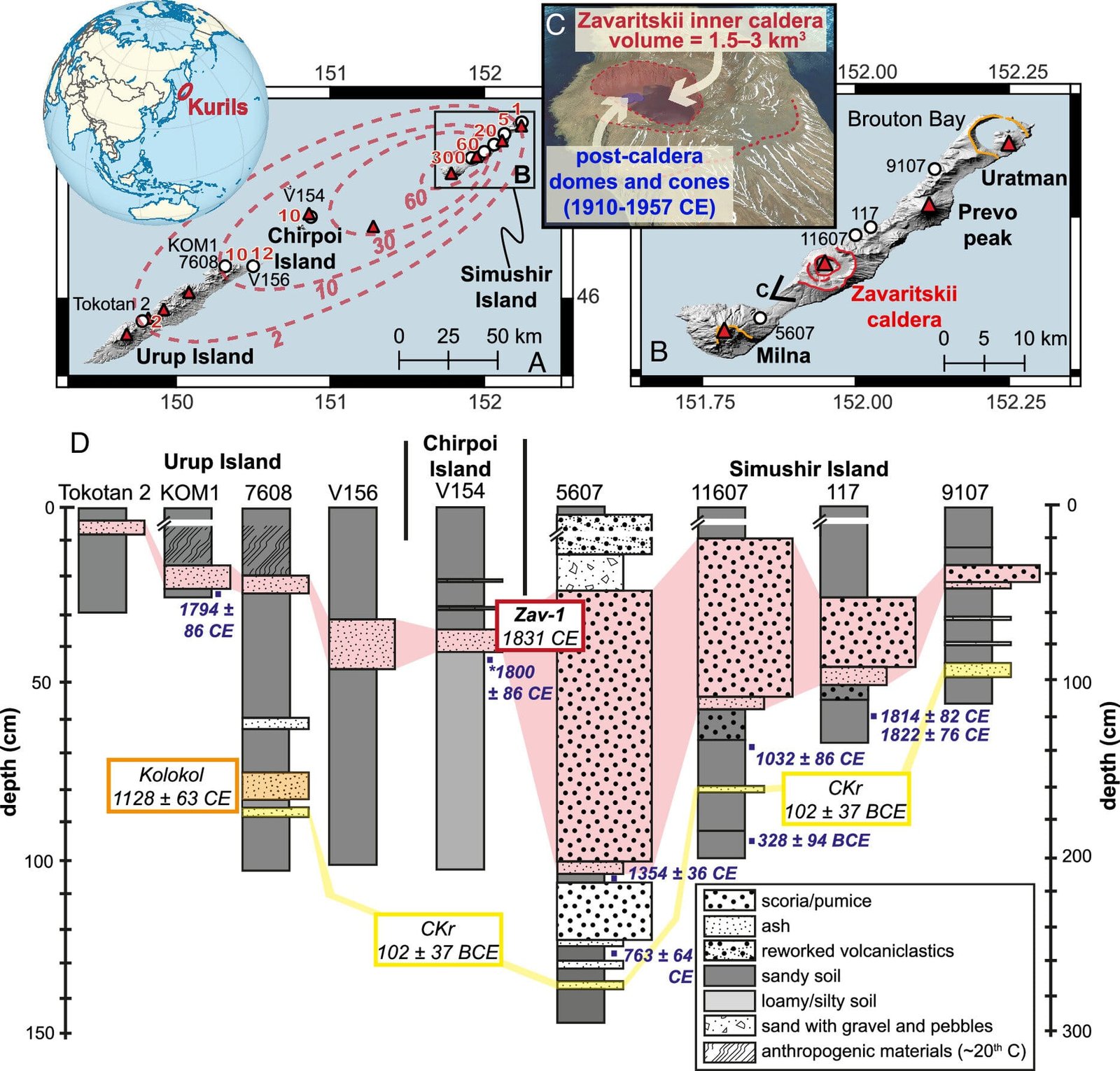For nearly two centuries, the identity of the volcano responsible for a massive eruption in 1831 remained an enduring mystery, captivating scientists and historians alike. The event, marked by dramatic global cooling, failed crops, and famine, was known only as Earth’s most recent “mystery eruption.” Now, researchers from the University of St Andrews have finally pinpointed the source of this catastrophic event, solving a puzzle that has lingered since the early 19th century.
In 1831, a colossal eruption launched sulfurous gases high into the atmosphere, forming a stratospheric aerosol layer that reflected sunlight back into space. This dramatic interruption of Earth’s natural climate system triggered a global temperature drop of approximately 1°C. Such cooling events, though subtle by today’s standards, had profound consequences in an era heavily dependent on agriculture. Historical accounts vividly detail the unrelenting cold, disrupted growing seasons, and food shortages that plagued regions around the globe.
The aftermath of this mysterious eruption extended beyond the physical world and entered the realm of art and literature. German composer Felix Mendelssohn captured the prevailing despair during his 1831 journey through the Alps, writing of “desolate weather” and deep snow blanketing nearby hills, conditions reminiscent of winter rather than summer. Across Europe and beyond, reports echoed Mendelssohn’s observations, yet no definitive link could be made to any specific volcano—until now.
Under the leadership of Dr. Will Hutchison from the University of St Andrews’ School of Earth and Environmental Science, a breakthrough was achieved in resolving this long-standing enigma. Published in the journal Proceedings of the National Academy of Sciences, Hutchison’s research represents a milestone in modern volcanology. Using advanced techniques to extract and analyze microscopic volcanic ash particles from polar ice cores, his team identified a chemical “fingerprint” tying the eruption to the Zavaritskii volcano in the Kuril Islands.
“The ability to extract such minuscule ash shards and analyze their chemistry is a relatively recent development in our field,” Dr. Hutchison explained. “These particles are incredibly tiny, roughly one-tenth the diameter of a human hair, and require precise instrumentation to study.”
The process of discovery was meticulous and required extensive international collaboration. Researchers relied on samples collected decades earlier from volcanic sites in Russia and Japan. By examining the ash composition found in ice cores and comparing it to known samples, they pinpointed Zavaritskii as the culprit. Their analysis also determined that the eruption occurred during the spring-summer of 1831, was highly explosive in nature, and released an immense amount of material into the atmosphere.
When the team compared the ash from the ice cores to volcanic deposits from Zavaritskii, the results were nothing short of astonishing. “The numbers were identical,” said Dr. Hutchison. “It was a genuine eureka moment. But even then, I spent a lot of time cross-referencing historical records and geological data to confirm the match was real.”
The Kuril Islands, a chain of over 50 volcanic islands stretching between Japan’s northernmost island of Hokkaido and Russia’s Kamchatka Peninsula, have long been recognized as a volcanically active but under-studied region. Remote and often inaccessible, the islands remain enigmatic despite their geological significance. Zavaritskii, located on the uninhabited island of Simushir, is part of this chain.
Historically, the Kuril Islands have been a contentious and strategic region, claimed by both Russia and Japan. Today, they are controlled by Russia and serve as a key military outpost. During the Cold War, Simushir itself housed a secret Soviet nuclear submarine base, hidden within the remnants of a volcanic caldera. This backdrop of geopolitical intrigue adds another layer of fascination to the story of the 1831 eruption.
The discovery of Zavaritskii as the source of the mysterious eruption has implications that extend far beyond historical curiosity. Understanding past volcanic activity is essential for predicting and preparing for future events, particularly those capable of affecting global climate. The 1831 eruption, though originating in an isolated location, had far-reaching consequences that underscore the interconnectedness of Earth’s systems and societies.
Large-magnitude eruptions like the one in 1831 are rare but inevitable. Identifying their sources is critical for risk assessment and mitigation. Many regions, such as the Kuril Islands, remain poorly monitored, posing significant challenges for forecasting and responding to future events of this scale.
“There are so many volcanoes like Zavaritskii, and this highlights just how difficult it is to predict when or where the next large eruption might occur,” Dr. Hutchison emphasized. “As scientists and as a society, we need to consider how to coordinate an international response when such an event inevitably happens again.”
The fallout from large-scale eruptions extends well beyond environmental impacts. Sudden climatic shifts can disrupt ecosystems, economies, and public health systems on a global scale. Identifying the source of the 1831 eruption is not merely an academic achievement but a step forward in understanding and mitigating the risks posed by such natural disasters.
The University of St Andrews research demonstrates the power of interdisciplinary collaboration and technological innovation in unraveling the mysteries of our planet’s history. Combining techniques from geology, chemistry, and climate science, the team has shed light on an event that profoundly influenced the 19th-century world. The findings also serve as a stark reminder of the Earth’s potential for sudden and dramatic change, underscoring the importance of preparedness and international cooperation in the face of future challenges.
As scientists look to the future, the Kuril Islands and similar regions will undoubtedly become focal points for further research and monitoring. Each discovery, like the identification of Zavaritskii, brings humanity closer to understanding and adapting to the dynamic and often unpredictable nature of our planet. While the mystery of the 1831 eruption has been solved, it also serves as a clarion call to remain vigilant, ensuring that we are ready for whatever challenges the Earth presents in the centuries to come.
Reference: William Hutchison et al, The 1831 CE mystery eruption identified as Zavaritskii caldera, Simushir Island (Kurils), Proceedings of the National Academy of Sciences (2024). DOI: 10.1073/pnas.2416699122
Think this is important? Spread the knowledge! Share now.
